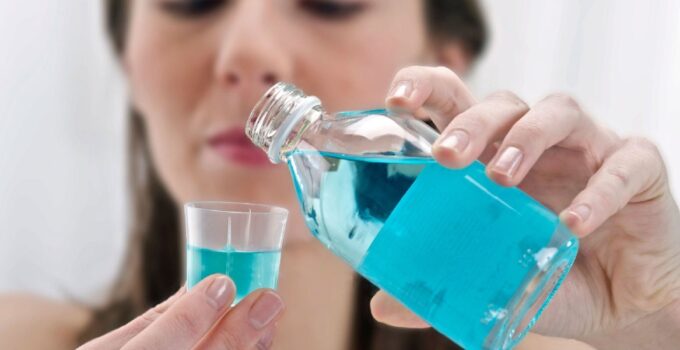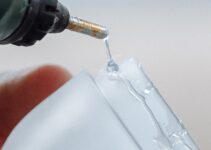Stroll the oral care aisle in any major retailer and you will confront endless product choices across multiple categories – toothpastes, toothbrushes, dental floss, mouthwashes and more. With limited shelf space, how do retailers decide what makes the cut? One rising category offers an appealing solution by concentrating more value into significantly less retail footprint: mouthwash concentrates.
The Battle for Shelf Space
Shelf space equals money in retail. Placement goes to the highest value products that balance consumer appeal, brand trust, potential sales volume, and efficiency. This drives fierce competition between oral care manufacturers vying for this precious real estate. Space gets divided across segments like whitening toothpastes, sensitive toothpastes, flosses, and kids’ products.
Traditionally, mouthwashes came packaged as bulky, ready-to-use bottles, often 32 ounces in size. These containers take up considerable shelf space relative to their sales potential. However, new mouthwash tablets and mouthwash concentrates revolutionize this equation.
Small on Shelf, Big on Opportunity

Source: pickettfamilydental.com
The concentrated form allows packing a two-month mouthwash supply into a thin box the size of a smartphone. Compared to quarts and gallons of pre-mixed formula, mouthwash tablets yield up to eight times higher efficiency for transporting and shelving. According to the good folk over at Ecofam, retailers can dedicate less space yet make more sales within the mouthwash segment.
For manufacturers, the appeal is obvious. Concentrates mean slashing plastic packaging costs and carbon emissions from moving mostly water. Production and shipping have become more efficient, allowing the passing of some margin to retailers as an incentive for premium placement. Shelf stickers promote green credentials to attract eco-minded buyers. Everyone wins.
How Concentrated Mouthwash Works
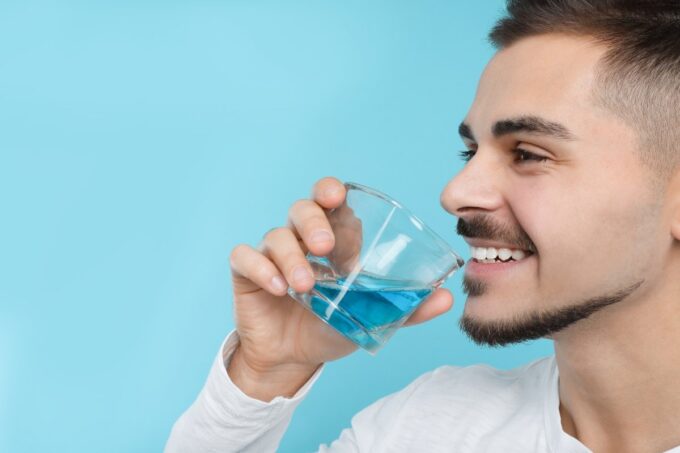
Source: hillsfamilydental.com
Mouthwash tablets may look tiny, but their formulation is anything but simple. Behind every fizzing tablet lies precise chemistry designed to match the cleaning power of conventional mouthwash, minus the bulk.
Here’s how they work, step-by-step:
- Drop a tablet in water: A single tablet is placed into a small glass of water (usually around 20–30ml).
- Watch it dissolve: Within seconds, the tablet begins fizzing and dispersing active ingredients throughout the liquid.
- Swish and spit: After full dissolution, the mixture is ready to use just like traditional mouthwash — for rinsing, freshening breath, and reducing oral bacteria.
- Adjust strength if needed: Users can increase or decrease the amount of water to control the intensity of the rinse.
Key advantages:
- No need for preservatives – Concentrates are dry-stored, so there’s no need for harsh additives.
- Custom dilution – Tailor strength based on personal comfort, sensitivity, or preference.
- Portability – Travel-friendly size for gym bags, carry-ons, or desk drawers.
- Longer shelf life – Without water or alcohol content, tablets are less prone to spoilage.
Sustainability Benefits
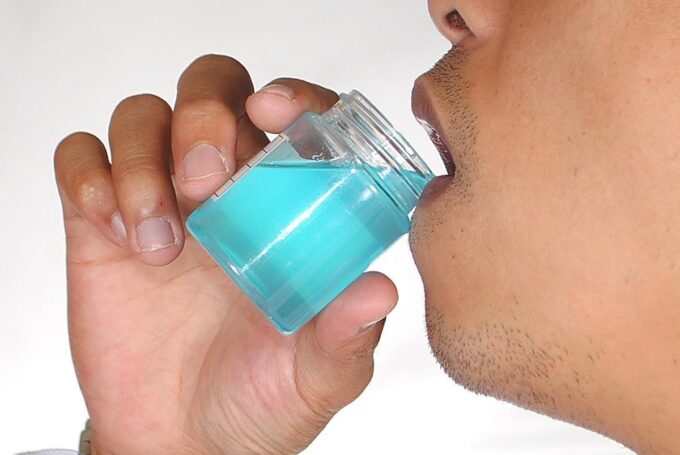
Source: oasisprosthodontics.com
The environmental case for concentrated mouthwash tablets is just as strong as the convenience factor. These products shrink more than just size — they reduce a whole chain of waste.
Environmental wins include:
- Less Plastic Waste
Traditional bottles are often single-use. Tablets come in recyclable cardboard or tin containers, reducing plastic reliance. - Reduced Transport Emissions
Shipping water-heavy liquids burns more fuel. Tablets weigh less and ship flat, lowering carbon footprints dramatically. - Lower Household Waste
One small package replaces up to two full-size bottles. That’s fewer trips to the bin and simpler recycling routines. - Fewer Microplastics
Even rinsing plastic bottles before recycling can send microplastics down the drain. Tablets remove that risk entirely.
A quick comparison:
| Feature | Traditional Mouthwash | Concentrated Tablets |
| Packaging Type | Plastic bottle (16–32 oz) | Cardboard or tin case |
| Typical Ingredients | 60–70% water | Dried active concentrate |
| Average Shelf Occupancy | High | Low |
| Travel Friendly | Bulky | Ultra-compact |
| Emissions per Unit Shipped | High (water weight) | Low (dry-packed) |
Tablet Innovation In Other Categories
Beyond mouthwash, the growing popularity of concentrated tablets extends into other oral care categories as well. Toothpaste tablets represent portable, plastic-free innovations. Dental floss also comes in small containers ideal for travel and tight spaces.
Across personal care, consumers show an increasing preference for convenience and lower waste products. Initially viewed as a niche market, mouthwash tablets have quickly gained mainstream appeal. The revolution in concentrated products conveniently and effectively satisfies these desires.
Wider adoption in personal care includes:
- Shampoo & Conditioner Bars/Tablets – Avoiding bottles and using solid forms that last longer.
- Body Wash Pods – Water-activated pods that lather like gel but ship in zero-waste packaging.
- Laundry & Cleaning Tablets – Household products that follow the same logic of waste reduction.
Retailers and Brands Stand to Gain
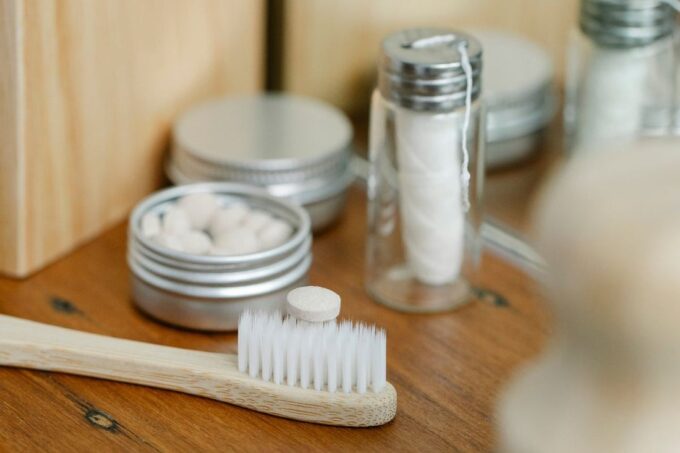
Source: brushfreshco.com
For both retailers and manufacturers, concentrated mouthwash tablets present a rare win-win scenario. Traditional mouthwash bottles, despite being recognizable, are inefficient in both space and logistics.
They take up valuable shelf real estate and contribute less profit per inch compared to their compact counterparts. In contrast, tablets offer a better margin per square foot, allowing stores to display more units in less space while catering to the growing demand for sustainable products.
From a brand’s perspective, tablets are easier and cheaper to produce, store, and ship. Without the need to bottle and transport large volumes of water, logistics costs decrease, and carbon emissions fall significantly.
This opens the door for companies to meet environmental goals and market themselves as eco-conscious, a powerful draw for today’s health and sustainability-focused consumers.
Retailers also gain flexibility. Tablets can be featured in travel sections, health aisles, or bundled in eco-themed promotions. Even limited floor space can accommodate multiple varieties — mint, cinnamon, sensitive, or whitening — without requiring an entire shelf.
As this format becomes more familiar, shoppers are likely to gravitate toward brands that provide both convenience and purpose. Concentrates aren’t just practical; they’re becoming the smart choice for everyone involved in the oral care supply chain.
Conclusion
With shoppers paying more attention to sustainable oral care, brands face growing pressure to reduce their environmental footprint. Limited shelf space at major retailers only raises the stakes further.
However, novel technologies like concentrated mouthwash tablets present a golden opportunity. Because of their impressively small size, these items completely and satisfyingly resolve the needs on both fronts, thus proving their overall effectiveness.

